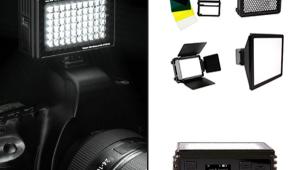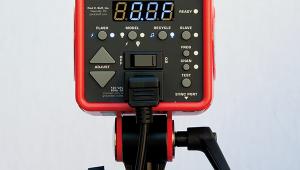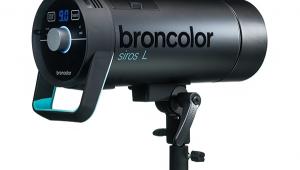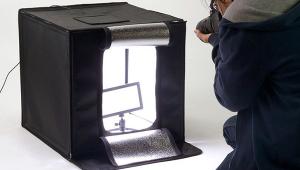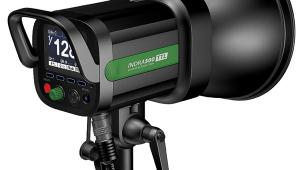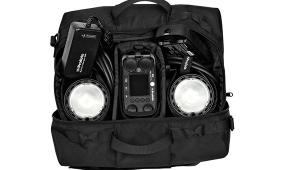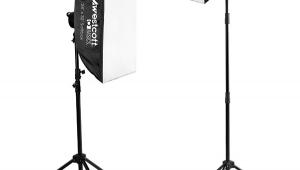I loved This Excellent Tips.
I'm a wedding photographer.
Calumet Genesis 300 B Monolight; Economical, Portable Flash
I’m not an equipment snob. That applies to both cameras and lighting gear. I’ve always believed that it’s that gray matter in back of your eyeball that determines whether or not you get a decent image, not the price tag on your gear. I like fast lenses and dislike variable apertures, so I pay for them. With lighting equipment, higher prices usually mean more power, more features and flexibility, and better construction. With that in mind, let’s see what the very reasonably priced Genesis 300 B monolight ($399 with battery) from Calumet offers.
 |
Inside the box there’s the flash unit, a tube and modeling lamp, cords, fuses, cables, and the battery pack. The first thing I noticed was how compact it is. It has a carrying handle on the back and the body is coated with a nice rubberized material. The back is well laid out and pretty intuitive with a digital read-out of the power output. The modeling light can be either full power (150w) or proportional and the audible alarm is a feature all flash units should have. The photocell sensor can be set to fire on the initial flash or after the one or two pre-flashes, an essential feature with many D-SLRs. The read-out goes from a low of 10 to a high of 60, which is supposed to represent a five-stop range.
 |
|
|
In The Studio
In the studio, this flash performed admirably. The layout on the rear of the unit is pretty straightforward except a visit to the basic instruction manual was required to figure out the slave sensitivity control. It has very reliable and repeatable power output, cycles in about 3 seconds at full power, and the digital read-out for the power output comes in very handy when you want to reproduce a lighting setup at a later date. For those of you who are not used to working with studio flash units, having an infinitely variable power control is a feature so important that I would not even consider buying a unit without it. This gives you the ability to control exposure precisely without moving the light. This is critically important.
You might ask, why not just move the light? Two reasons. One, you may not be able to; there may be a wall that comes into play. Two, you will not only change the intensity of the light, you will change its character. Move it closer, it’s a bigger light source. Move it further away, it’s a smaller light source. By changing the power output while not moving the light, the quality of the light remains unchanged. I used the unit with an umbrella modifier in the studio; the tilting head offers a built-in hole for the umbrella. Accessories for the entire extensive range of Elinchrom light modifiers will fit this light as well.
 |
|
|
On Location
The battery pack is a big reason for a working pro to consider this light. It’s not that heavy, and, according to manufacturer’s specs, it should be good for about 200 full-power flashes, which should be plenty for most assignments. As you’d expect, using a battery adds to the recycle time, although I found it to be about 4 seconds on a full-power flash, not that much of a penalty when you consider the convenience factor. An interesting accessory that you may want to consider is the radio-controlled wireless trigger that is optimized for use with either Canon or Nikon. With wireless triggers and a battery pack, you can shoot anyplace remotely and fire the flash from up to 100 meters away.
 |
|
|
- Log in or register to post comments



